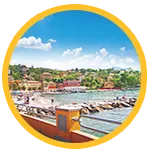
- Home
- Lines
-
Lines
- Lines
- Line 1
Rapallo - S. Margherita Ligure - Portofino - S. Fruttuoso - Line 2
Sestri Levante - Lavagna - Chiavari - Portofino - S. Fruttuoso - Line 2bis
Deiva Marina - Moneglia - Portofino - S. Fruttuoso - Line 3
S. Margherita Ligure - Rapallo - Chiavari - Lavagna e Sestri Levante - Porto Venere - Cinque Terre (tutto il giorno) - Line 4
S. Margherita Ligure - Rapallo - Super Cinque Terre (tutto il giorno) - Line 5
Chiavari - Lavagna - Sestri Levante - Super Cinque Terre (tutto il giorno) - Boat rental
- Fares 2024
- Groups
- Groups
- Useful info
- Useful info
- Special events
- Special events
- The fleet
- Contact us
- Lines
- Line 1
Rapallo - S. Margherita Ligure - Portofino - S. Fruttuoso - Line 2
Sestri Levante - Lavagna - Chiavari - Portofino - S. Fruttuoso - Line 2bis
Deiva Marina - Moneglia - Portofino - S. Fruttuoso - Line 3
S. Margherita Ligure - Rapallo - Chiavari - Lavagna e Sestri Levante - Porto Venere - Cinque Terre (tutto il giorno) - Line 4
S. Margherita Ligure - Rapallo - Super Cinque Terre (tutto il giorno) - Line 5
Chiavari - Lavagna - Sestri Levante - Super Cinque Terre (tutto il giorno) - Boat rental


The La Spezia Gulf is a deep creek that extends from Portovenere to Punta Bianca, a mix of colors with an infinity of nuances where the sky
and the sea seem to fuse to exalt now the silvery grey of the cliffs, now the emerald green of a vegetation that is mirrored in the sea.
Getting to it from the sea means taking an unique view at a glance, with the magnificent Apuane Alps that rise behind the nearby Versilian coastline.
In the Eastern part of the Gulf you find villages such as Tellaro, charming and colored, and bigger towns like Lerici,
gathered round a little bay closed by a rocky promontory a massive castle stands on.
In the next one San Lorenzo stayed in 1822, the English romantic poet Perey B. Shelley with the brilliant wife Mary (the author of “Frankestein”),
enjoying the frequent company of Lord Byron and of the extraordinary beauty of the scenes.
Thanks to these and other famous guests arrived at its shores, the La Spezia Gulf has become the Poets’ Gulf,
name that suits the graceful and original landscape of this far strip of the Eastern Riviera.

-
Porto Venere
The ancient Portus Veneris, settled on the western height of La Spezia’s gulf, became in 1113 a Genoise colony, and the new lords built beside the “Castrum Vetus”
– the settlement which already existed close the Arpaia’s promontory – the group of fortifications, which until the last century was facing the sea.
During the XII century, beside the imposing Cast/e, the genoans built the beautiful Church of S. Lorenzo, in where you can admire the painting of the Madonna Bianca,
patroness of Portovenere to whom is dedicated the night of September the 17th, when the inhabitants organize an unique show by illuminating the whole town.
Some wide stairs lead, through the promontory, to the Church of S. Pietro, a small structure which – thanks to the charm
of the naked story and to the armony of the gotic archs – give to the tourists mystical feelings.
The mullioned window – exactly above the church – offers to the tourists a wide panorama on the coloured “Tramonti’s coast” and on the “Scoglio Ferale’ while below
there is the Grotta Arpaia/so known as Grotta di Lord Byron, steep cliff which was the favourite place of the english poet and which is today the goal of bathers and sun freaks.
Close to the old gate of village, where still now you can read the original writing “Colonia Januensis 1113’” it begins Via Capellini,
the “caruggio” (narrow-street) developing itself in ancient gates, stores, workshops and in peacefully places, behind the houses in front of the sea. -
Islands
On the PALMARIA Island, sea resort separated from Portovenere by a narrow and busy channel, besides some marble abandoned caves it is facing the sea the nice Blu-Light Cave
(reachable only by small boats) and, further up, the famous Dove Cave, a gorge where have been found animal bones, human burial ruins and manufactured articles at least 5000 years old.
On the Tino Island, open to the public only on the 13th September, or on the closest Sunday, there are ruins of a chapel built in the VII century to host
San Venerio’s remains (who stayed there as a hermit), and those of a monastery and of a XI century church.
Even in the little TINETTO rock, swept without pity from winds and sea storms, there are remains of a hermitage
dating back to the V-VI century and the ruins of a XI century church.
